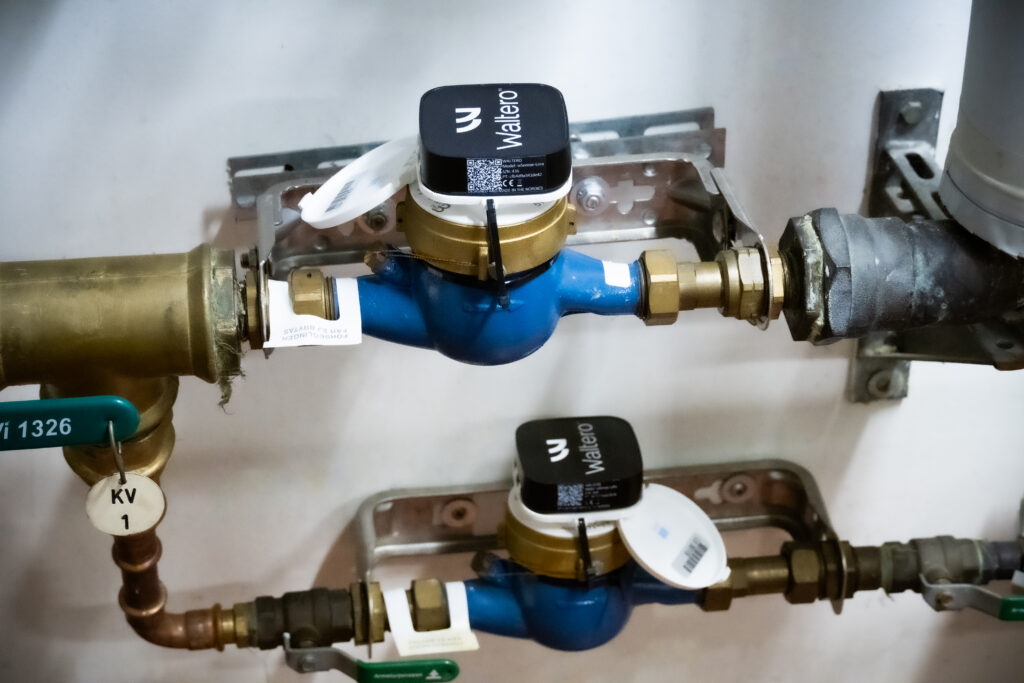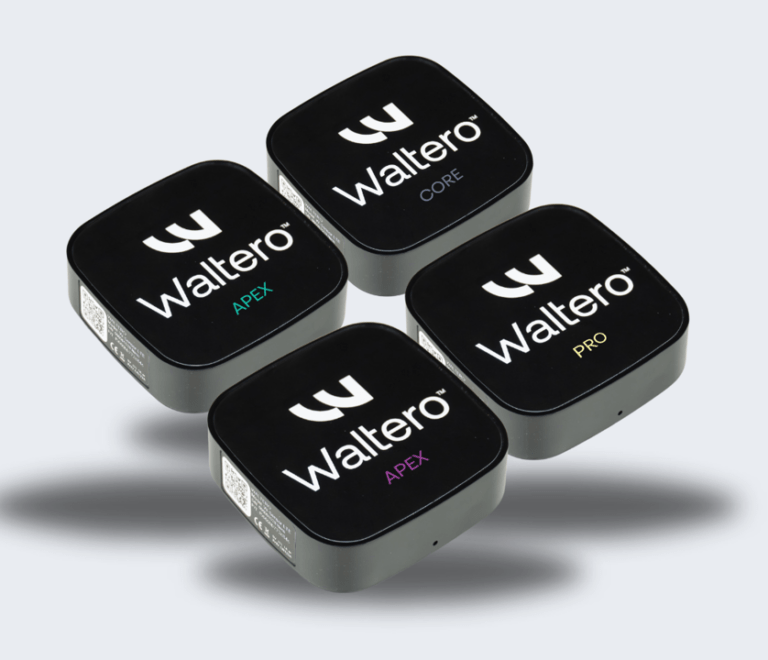Introduction
Water utilities worldwide face increasing pressure to modernize their infrastructure. Aging pipes, non-revenue water (NRW) losses, and inefficient asset management create operational challenges that cost billions annually. Traditional water management approaches are no longer sufficient to meet growing demand, sustainability goals, and regulatory requirements.
At Waltero, we believe that smart water networks are the key to overcoming these challenges. By integrating network optimization strategies, real-time monitoring, and data-driven decision-making, including data acquisition, utilities can enhance efficiency, reduce costs, and improve service reliability.
In this article, we explore the latest advancements in smart water networks, how they solve pressing industry challenges, and what the future holds for utility operators.
What is a Smart Water Network?
A Smart Water Network is a comprehensive, data-driven ecosystem designed to optimize every facet of water distribution, wastewater collection, and treatment systems. At its core, it integrates a network of physical assets, such as pipes and pumps, with advanced sensing and control equipment. These components are connected through sophisticated collection and communication technologies, enabling seamless data flow across the entire water system.
By leveraging real-time data management and display systems, along with powerful data fusion and analysis tools, Smart Water Networks provide utilities with unparalleled visibility and control over their operations. This integration allows for continuous monitoring of water, pressure, and flow, ensuring that any anomalies are detected and addressed promptly. The result is a more efficient, reliable, and sustainable water network that enhances the longevity of physical assets, reduces energy consumption, and maintains high standards.
Why Smart Water Networks Matter
The Growing Demand for Digital Water Solutions
The global smart water grid market is projected to reach $36 billion by 2033, growing at a steady pace as more utilities invest in digital transformation. Smart water networks leverage IoT sensors, AI-driven analytics, and edge computing to provide real-time insights into water distribution, leak detection, and asset management.
Key drivers fueling this transformation include:
Water scarcity: With over 30% of distributed water lost globally, utilities need smarter ways to track and mitigate leaks.
Regulatory compliance: Stricter policies require utilities to provide detailed utility reporting on water levels, efficiency, and conservation efforts.
Operational cost reduction: Preventive maintenance and real-time network adjustments lower repair expenses and extend asset lifespans.
Supervisory control is a critical component that enables utilities to interface with and manage their physical assets through systems like SCADA or GIS, supporting data management and visualization.
Benefits of Smart Water Networks
Implementing Smart Water Networks offers a multitude of benefits for water utilities, driving both operational efficiency and customer satisfaction. One of the most significant advantages is improved energy efficiency. By utilizing data analytics and machine learning algorithms, these networks can optimize pumping operations, reducing energy consumption and lowering operational costs.
Enhanced Customer Engagement: Consumers can access real-time data about their water usage, promoting conservation and responsible consumption.

Operational Efficiency: Automation and data-driven decision-making streamline operations, leading to cost savings and improved service reliability.

Sustainability: By optimizing water usage and reducing waste, smart water networks contribute to more sustainable water management practices.

Leak Detection and Reduction: Smart networks can quickly identify leaks and inefficiencies, significantly reducing water loss and associated costs.

Smart Water Networks also play a crucial role in minimizing water loss. Advanced leak detection systems can identify and address leaks in real-time, preventing significant water wastage and reducing non-revenue water losses. Additionally, the ability to predict and prevent pipe breaks through predictive maintenance further enhances the network’s reliability and reduces repair costs.
Challenges in Traditional Water Management
Despite technological advances, many utilities still rely on outdated infrastructure, leading to inefficiencies, increased costs, and aging infrastructure.
1. Aging Infrastructure & Limited Visibility
Many water networks were built decades ago, lacking modern monitoring tools.
Operators struggle to detect leaks and pressure fluctuations until failures occur.
Reactive maintenance results in costly emergency repairs and service disruptions.
2. Non-Revenue Water (NRW) Losses
Globally, 30–35% of water is lost due to leaks, theft, or meter inaccuracies.
Utilities face revenue losses exceeding $39 billion annually.
Manual inspections and periodic meter readings fail to provide timely leak detection.
3. Data Silos & Operational Inefficiencies
Disconnected systems prevent real-time data sharing between treatment plants, distribution networks, and customer interfaces.
Lack of centralized analytics leads to inefficient decision-making and resource allocation.
Integrating data technologies into stormwater networks is crucial for enhancing the efficiency and sustainability of water-related systems.
How Smart Water Networks Solve These Challenges
1. Network Optimization through Real-Time Monitoring
Smart water networks rely on IoT-enabled sensors and meters to track pressure, flow, and water levels. These sensors feed data into edge AI systems that analyze conditions and detect anomalies in near real-time.
Immediate leak detection minimizes water loss.
Pressure monitoring prevents pipe bursts and extends infrastructure lifespan.
Flow tracking ensures equitable distribution and rapid response to anomalies.
Example: Singapore’s PUB deployed 300,000 smart meters to improve water demand forecasting and reduce wastage.
2. Predictive Maintenance Using AI & Edge Computing
Traditional maintenance relies on periodic checks, leading to unexpected failures. With predictive maintenance, AI models analyze historical and real-time sensor data to identify early warning signs of wear and tear.
Machine learning models forecast pipe failures based on vibration, pressure, and acoustic signals.
Automated maintenance scheduling reduces downtime and repair costs.
Near real-time alerts allow operators to fix issues before they escalate.
3. Utility Reporting, Water Levels & Compliance Automation
Utilities must adhere to strict reporting requirements for leakage control, water levels, and energy consumption. Smart water networks automate utility reporting by aggregating real-time data from the entire distribution system.
Regulatory dashboards provide instant compliance insights.
Automated leak reporting ensures quick corrective actions.
AI-driven analytics help utilities optimize conservation programs.
4. The W-Solution of Waltero
Waltero’s solution, powered by the W-Sensor, brings unmatched simplicity and intelligence to smart water networks. Combined with IoT and Machine Self-Learning System and designed for rapid, hassle-free deployment, the W-Sensor can be installed in under 5 minutes, making it ideal for large-scale rollouts.

Its built-in edge AI processes data on-site, reducing the need for constant cloud communication and ensuring real-time responsiveness. This decentralized approach enhances system resilience while lowering infrastructure demands.

Scalable and adaptable, the W-Sensor seamlessly integrates into diverse environments, helping utilities digitize operations efficiently. With the W-Solution, water networks gain a powerful, future-ready tool that streamlines data collection and supports smarter, more sustainable decision-making.
Smart Water Infrastructure
Smart Water Infrastructure represents the integration of cutting-edge technologies into the water distribution and treatment system, revolutionizing utilities operations. This infrastructure includes a wide array of sensors, IoT devices, and data analytics tools that work together to provide real-time insights into the water system’s performance.
By continuously monitoring various parameters such as flow, pressure, and water levels. Smart Water Infrastructure enables utilities to detect and address issues promptly, preventing leaks and reducing water loss. The data collected from these advanced technologies is analyzed to identify patterns and trends, offering valuable insights that help optimize operations and improve overall efficiency.
Moreover, Smart Water Infrastructure enhances compliance with regulatory standards by providing accurate and timely data on water levels and system performance. This ensures that utilities can meet stringent regulatory requirements while maintaining high standards of service. Ultimately, the integration of smart technologies into the water system leads to more sustainable and resilient water networks, capable of meeting the demands of the future.
The Role of Digital Twins in Water Management
A digital twin is a virtual replica of a physical water network that updates in real-time using sensor data. Digital twins allow utilities to:
Simulate different scenarios (e.g., high demand, pipe failures, extreme weather events).
Optimize pump schedules to minimize energy consumption.
Improve water age management to enhance quality and safety.
Digital twin technology is transforming the water sector by creating dynamic virtual models of real-world water systems. These digital replicas mirror the physical infrastructure, capturing components, behaviors, and interactions in real time. With continuous data input, digital twins allow for ongoing monitoring, simulation, and performance analysis, driving smarter and more efficient water management.
Future Trends in Smart Water Networks
Looking ahead, the water industry will continue embracing cutting-edge technologies to enhance efficiency and sustainability.
1. AI-Driven Decision Support
AI models will provide real-time operational recommendations, reducing human intervention.
Advanced machine learning algorithms will improve demand forecasting and emergency response planning.
2. 5G & IoT Expansion
5G networks will enhance connectivity for remote sensors, improving real-time data collection.
NB-IoT technology will become the standard for smart meter communication, offering better coverage and lower power consumption.
3. Integration of Renewable Energy in Water Utilities
Smart grids will synchronize solar and wind energy with water pumping schedules to minimize energy costs.
AI will optimize power consumption by adjusting pumping operations in response to electricity price fluctuations.
As a leading global hub for advancing data technologies within the water, wastewater, and stormwater sectors, fostering collaboration among industry leaders is crucial to enhancing awareness and effectiveness of smart data systems.
Conclusion
At Waltero, we are committed to helping utilities navigate the transition to smart water networks by leveraging cutting-edge technology and network optimization strategies. Digital transformation in water management is no longer optional—it is essential for sustainability, efficiency, and regulatory compliance.
By embracing smart water networks, utilities can reduce waste, lower costs, and ensure a sustainable future for water management.
Mattias Nahlin – Chief Strategy Officer, Waltero
Mattias shapes Waltero’s strategy, leveraging deep expertise in business development and product management. Having led multiple growth journeys at tech innovators, he is now focused on identifying market opportunities for AI and computer vision solutions that propel digital transformation, operational visibility and intelligent use of resources.

